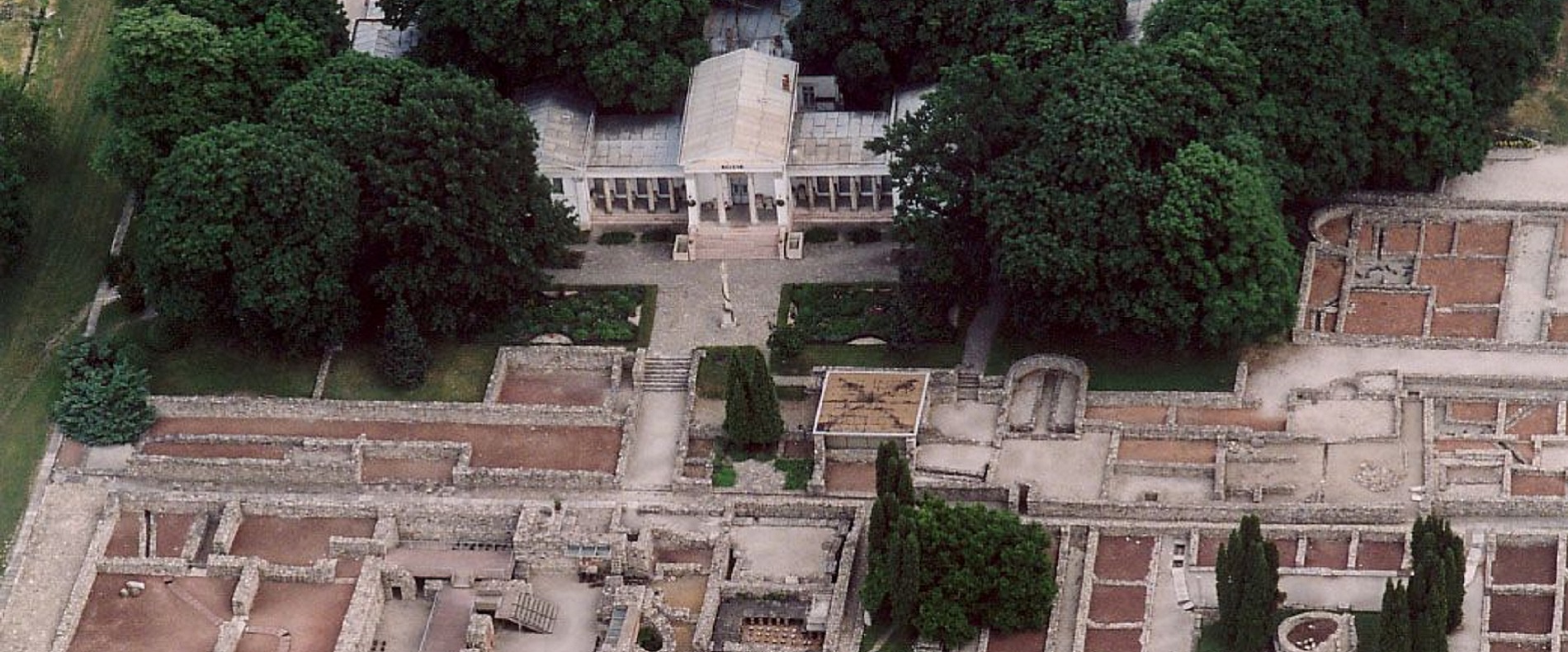
Frontiers of the Roman Empire – Ripa Pannonica in Hungary
The border and defense line of the Roman Empire, the limes protected the empire and the Roman civilization from barbarian attacks, marking its north-eastern border throughout the four centuries from the beginning of the 1st century AD to the first half of the 5th century. The military facilities of the limes were continuously built up from the second half of the 1st century AD. The Transdanubia region made up most of the territory of the province of Pannonia, the border defense line of which was built entirely along the River Duna. The task of the military was to guard the borders of the empire and control the most important waterway of the continent. Hungary also has monuments of the Roman border protection along the River Danube. These Roman monuments – testaments of nearly 2000 years of structural continuity – did not disappear without a trace, but continue to attest to the greatness of the Roman civilization. Among the ruins of the forts of Arrabona (Győr), Solva (Esztergom), Pone Navata (Visegrád) and Aquincum (Óbuda), the former Roman centers were replaced by the emerging administrative centers of the Medieval Hungarian kingdom.
The Roman Empire reached its greatest extent during the 2nd century AD. The safety of Italy, Rome and the provinces was guaranteed by a standing army financed by the imperial treasury. In the 1st to the 3rd century AD, the army consisted of legions of 6000 soldiers and support troops (the Auxilia) of 500 or 1000 soldiers. The wooden and earth defense structures of the early legion and auxiliary camps were gradually fortified with stone.
The legions were stationed at permanent camps with a square floor plan and four gates, guarded by fortified walls, towers and multiple outer trenches. The camps also included military barracks, command buildings, baths and hospitals – almost resembling a proper city. Later, military towns (canabae) emerged around most of those camps. The cavalry and infantry auxiliary camps followed the same layout plan as the legion camps. The borders of the Pannonia province were protected by the four legion camps of Vindobona (Bécs), Carnuntum, Brigetio (Komárom/Szőny) and Aquincum, as well as auxiliary camps and the battle fleet on the Danube.
The coordinated communication and logistical success of the imperial border defense system and the military was provided by the River Danube, serving as both border line and trade route, as well as by the limes along the river bank that connected the camps and the civil settlements around them, which was also marked by ancient maps. Many of the Roman roads were also used in the Middle Ages, and certain sections even in the 18-19th centuries. Along the limes and the riverbank, a dense line of wooden or stone watchtowers were built in the 2nd century AD, where soldiers were stationed to oversee beyond the border. They sent light signals from the watchtowers to alert of enemy attacks, which were warded off by the arriving legions and auxiliary troops.
In the Late Roman Empire, from the second half of the 3rd century AD, the military structure changed: the legions with a decreased number of 1000 soldiers, as well as the rearranged auxiliary troops protected the Roman frontier that remained unchanged since the 1st century. The border defense camps were converted to late-Roman fortresses with projecting towers. Next to the former camps, at strategically important locations, small forts were and fortresses adapted to the topographical conditions (such as the one on the Visegrád-Sibrik Hill) were built, with projecting towers at the sides and corners. At the same time, counter-castles were built in the Barbaricum across the Danube. A unique feature in the Hungarian section of the limes is that the late-Roman port fortresses built upon both sides of the Danube consisted of a central tower, two side towers and walls protecting the harbor quay, securing the safe crossing of cargo and troops. The remains of such late-Roman port fortresses can be found in Dunakeszi and Verőce. Significant stations, fortifications and military outposts had a decisive strategic importance.
A new type of watchtower network was built in the 4th century, mostly along the lower Pannonian (the counties of Pest, Fejér and Tolna) section of the limes. These were standardized multi-storey watchtowers built from wood or stone and surrounded by a trench. From the second half of the 4th century, it became more and more common for civilians and the families of the soldiers to seek refuge in these fortifications due to the gradually deteriorating public safety and the growing intensity of the attacks. At the turn of the 4th and 5th century, smaller towers were built in many fortified areas, part of the old camps were closed off, and the gates were walled up as the numbers of the garrison decreased. The Roman army and administration managed to hold the forts and watchtowers of the Pannonia limes until the 430s, when they came under the rule of the Hun kings of Eastern Transdanubia.
The sites nominated for the World Heritage List are located along the entire Hungarian section of the Danube and each one of them is under special archaeological protection.
